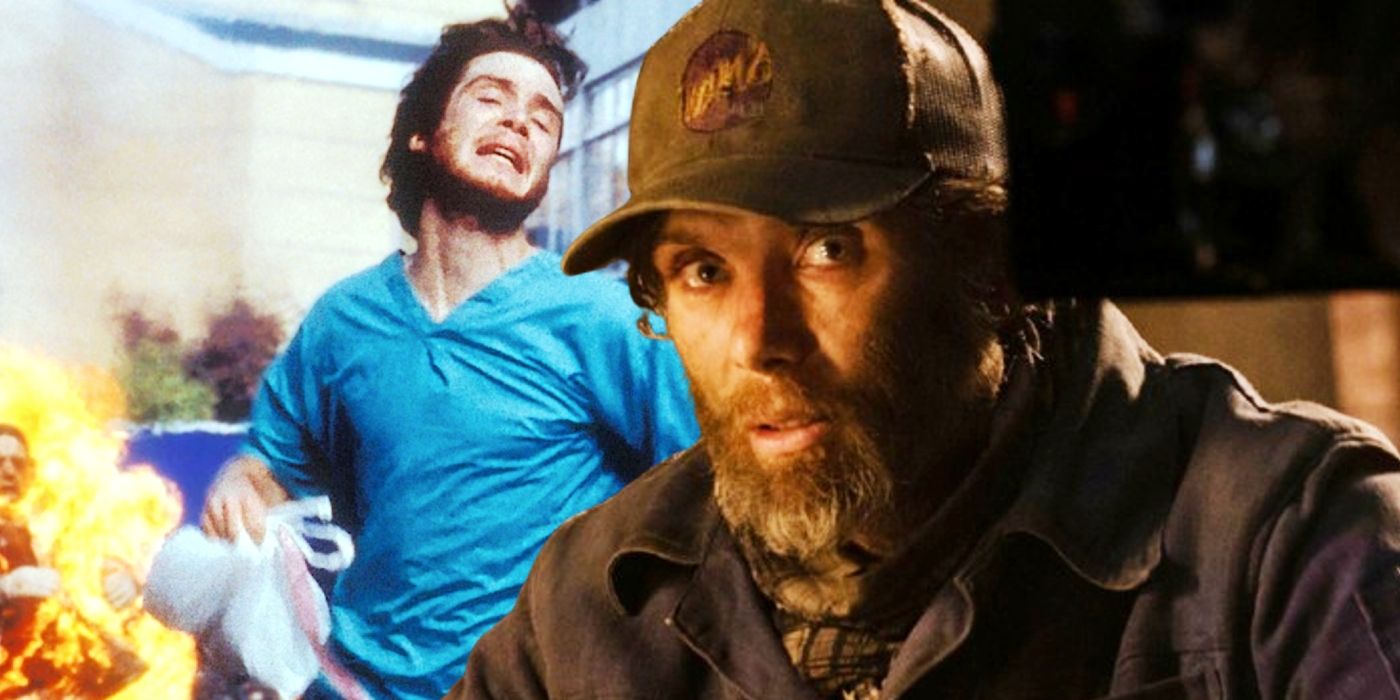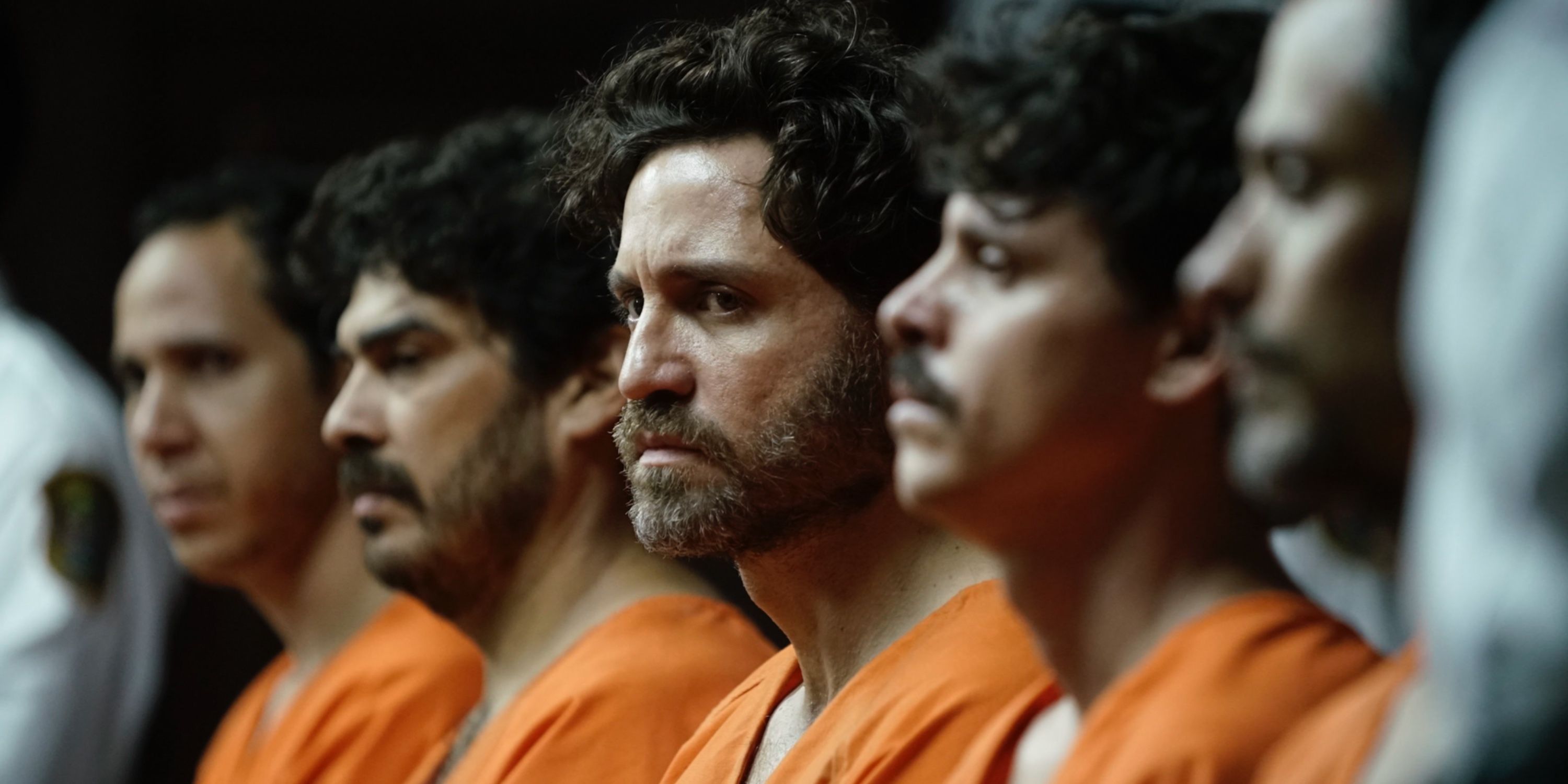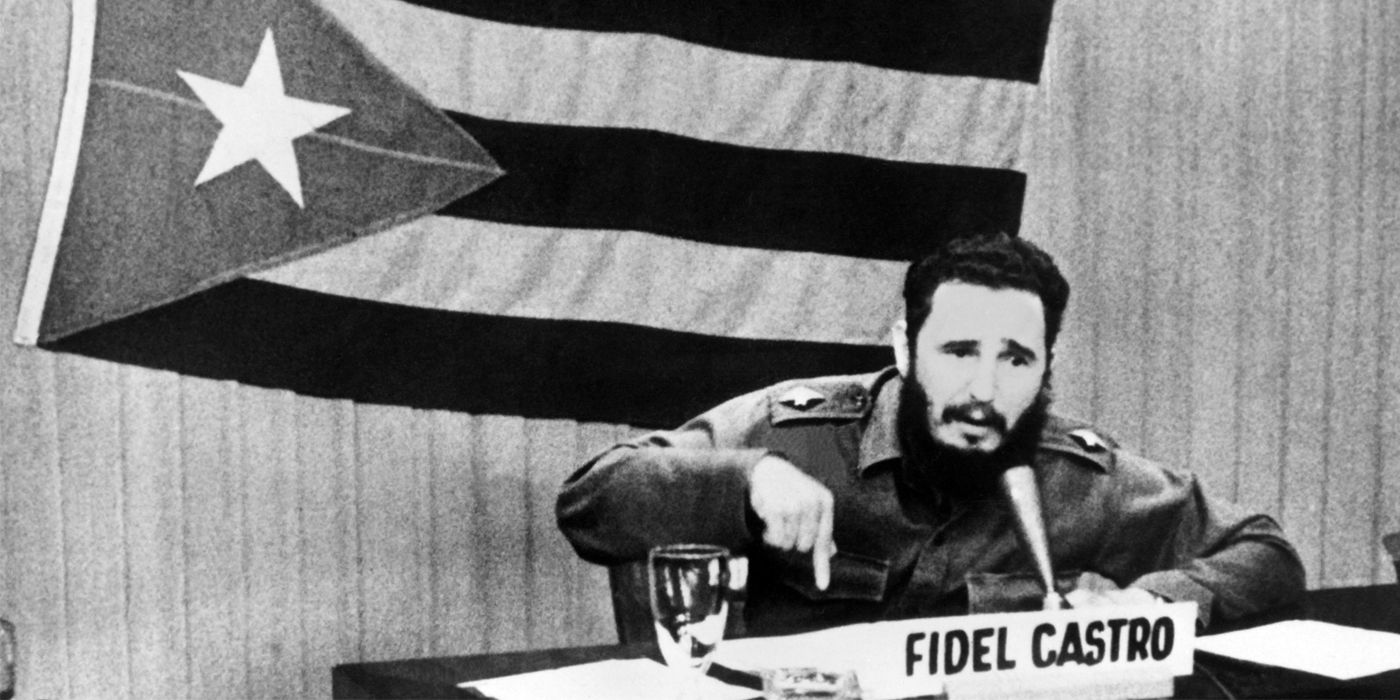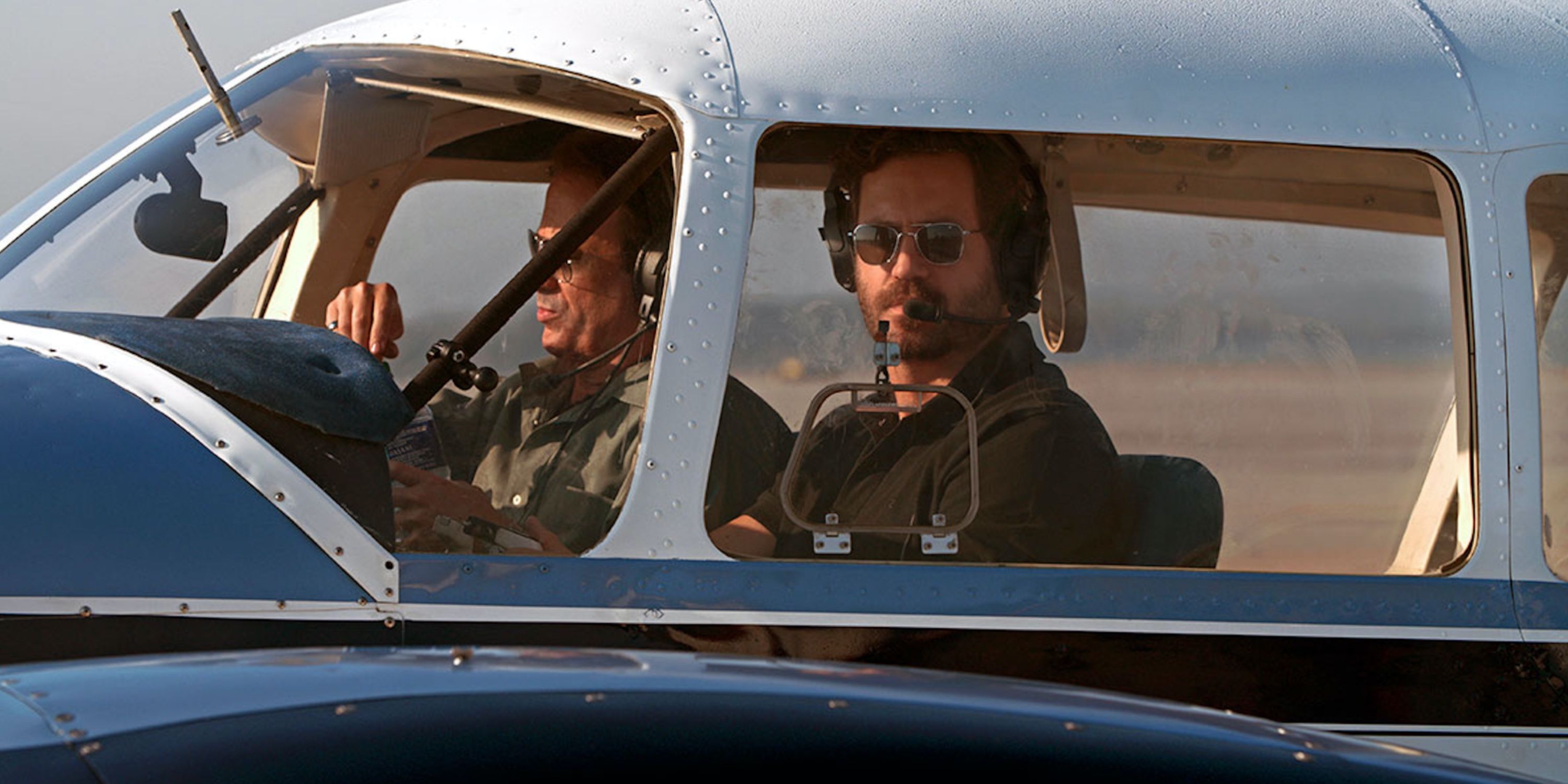Warning: Spoilers for Wasp Network.
Directed by French filmmaker Olivier Assayas, Wasp Network chronicles the true story of the Cuban 5 — intelligence officers who infiltrated Cuban-American organizations during the '90s. The narrative premise is based on Fernando Morais' 2011 book The Last Soldiers of the Cold War: The Story of the Cuban Five, and the movie adaption retains the basic storyline, albeit with some structural time shifts for dramatic purposes. Now streaming on Netflix, Wasp Network released in June 2020.
Wasp Network with chyron graphics that explain the historical context. Cuba has been a communist regime since 1959, and U.S. embargo laws have made life extremely difficult for Cuban locals. The Netflix film opens with pilot René González (Édgar Ramírez) leaving his wife Olga (Penélope Cruz) and daughter Irma (Osdeymi Pastrana Miranda) without a proper explanation. Because René is technically an American, it's assumed by his family members that he's merely a traitor who defected. Meanwhile, a military officer named Juan Pablo Roque (Wagner Moura) also defects and forms a new life with wife Ana (Ana de Armas) in America. Since both René and Juan have unique skillsets, they're recruited by organizations such as the Cuban American National Foundation (CANF) and Brothers to the Rescue, both of which are dedicated to protecting Cuban refugees.
The twist in Wasp Network comes near the one-hour mark with the introduction of Gerardo Hernández a.k.a. Manuel Viramontez (Gael García Bernal), who — four years prior — is tasked with heading the film's titular organization, a secret unit which aims to protect Cuba from cultural terrorism. A mid-movie montage sequence explains the backstory, and the film's final act builds to the 1998 arrests of the "Cuban 5." Here's a full ending breakdown for Wasp Network on Netflix.
The U.S.-Cuban Historical Backdrop To The Wasp Network
The opening seconds of Wasp Network reference Cuba's communist regime, but don't explain the full context. Between 1953 and 1959, Fidel Castro led a cultural revolution that ended with rebels taking control of Cuba on January 1, 1959. Less than two years later, U.S. President John F. Kennedy and the American government financed the infamous Bay of Pigs invasion, an attempt to legitimize the rebel regime that ultimately made Castro even more powerful. By November 1963, Kennedy was assassinated in Dallas, Texas; an unsolved crime that has been linked to Cuban rebels [via History].
In pop culture, Castro is often correlated with his late comrade Ernesto "Che" Guevara," who ultimately became an iconic figure of rebellion, both before and after his 1967 capture and execution by the CIA in Bolivia. For some extra pop culture context, the 1983 movie Scarface begins with Cuban refugees fleeing to America, specifically to Miami. This is the backstory for Wasp Network, which is essentially about proud Cuban intelligence officers who moved to Miami and attempted to identify the cultural landscape of the time, and what Cuban-American locals were thinking and/or plotting.
The Real Life American-Cuban Organizations
Wasp Network focuses on four organizations. Early on, René meets with José Basulto (Leonardo Sbaraglia), who explains the premise for his group of Cuban exiles named Brothers to the Rescue. In 1991, a 15-year-old Cuban boy died of dehydration while attempting to flee his native country. In response, Basulto formed a team to protect Cuban refugees, and even dropped anti-Castro pamphlets while flying over Cuba, as depicted in Wasp Network. René initially joins Brothers to the Rescue, but soon discovers that drug smuggling is also part of the agenda.
Another key organization in Wasp Network is the Cuban American National Foundation, led by president Jorge Mas Canosa. This particular group has been accused of orchestrating terrorist acts in Cuba, specifically to legitimize the tourism industry. In the Netflix film, Canosa attends the wedding of Ana and Juan, the latter of whom suddenly returns to Cuba just two days before Brothers to the Rescue planes were shot down by the Cuban Air Force in 1996. Wasp Network ends with Roque failing to even acknowledge the existence of his wife, Ana.
Wasp Network also references Alpha 66, which is referenced as "the most aggressive terrorist group" during the film's flashback montage sequence. The organization dates back all the way to the early '60s, and plays a role in the Netflix narrative as the home to anti-Castro Cuban exiles who want to delegitimize the communist regime by wreaking havoc. The F4 Commandos were another right-wing terrorist group who trained Central America natives in Miami. In Wasp Network, Luis Posada Carriles (Tony Plana) is identified as an anti-Castro terrorist, and has been described as the "godfather of Cuban exile violence."
The Real-Life Wasp Network
The real-life Wasp Network was known as "La Red Avispa." Due to the amount of terrorist attacks in Cuba — orchestrated by exiles living in America — a secret organization was formed to infiltrate Brothers to the Rescue, the Cuban American National Foundation, Alpha 66, and the F4 Commandos. They were led by Gerardo Hernández, who is portrayed by Mexican actor Gael García Bernal in the Netflix movie.
La Red Avispa was initially successful by accepting the fact that they would be viewed as traitors. For example, Wasp Network opens with René leaving his family, and Olga struggling to accept the alleged truth about her husband. The Netflix film stays true to what transpired in real life by detailing how the "Cuban 5" defected in the early '90s and began observing various Cuban-American terror groups in Miami. In February 1996, the Wasp Network shot down two Brothers to the Rescue crafts that were technically in "international waters." This event led to the downfall of La Red Avispa and the Cuban 5.
What Happened To The Real Cuban 5
The real "Cuban 5" are Gerardo Hernández, Ramón Labañino, Antonio Guerrero, Fernando González, and René González. They were arrested in 1998 and ultimately sentenced to four life terms in 2001, due to various convictions on conspiracy charges. According to the U.S. government, the Cuban 5 were plotting against America. In reality, however, they were formed to protect Cuban exiles from plotting against their home country. Members of the Wasp Network remained in jail during throughout the 2000s, and received public support from influential figures all over the world. In 2011, René González was the first to be freed, and the others were subsequently released over the next three years.
For dramatic purposes, Wasp Network on Netflix focus on González, Hernández, and their relationship with Juan Pablo Roque, who — as previously mentioned — returns to Cuba just one day before the Brothers to the Rescue crafts were shot down. The real-life story is much more complex, as detailed in the book The Last Soldiers of the Cold War, however Netflix covers the essentials by explaining the central mission of the Wasp Network, what they wanted to achieve, how they were perceived both in Cuba and America, and what happened to them after their work became rather public in the late '90s.









